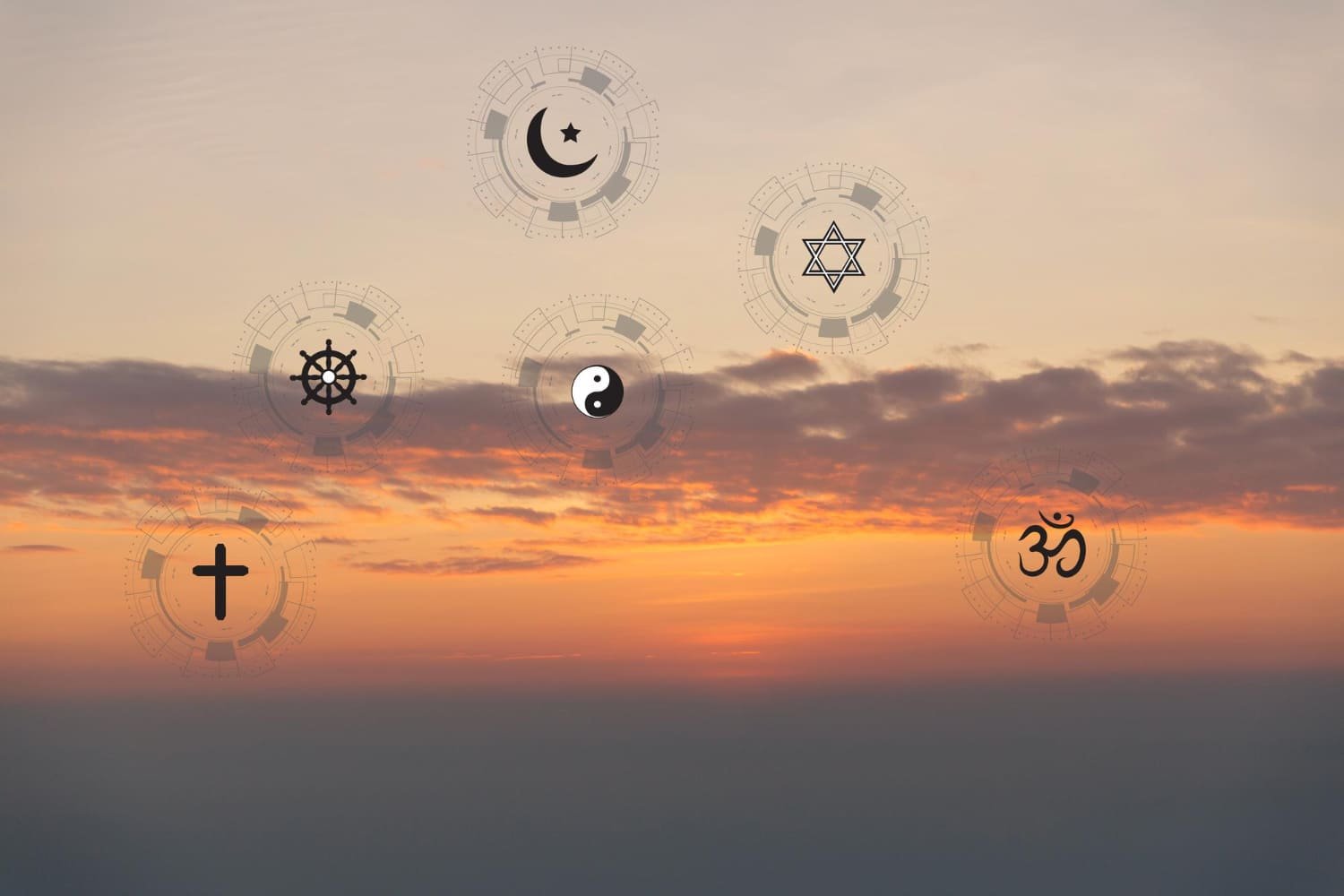Buddhism and Jainism are two ancient religions that originated in India. Both religions share some similarities, such as their emphasis on non-violence and the belief in karma and reincarnation. However, there are also significant differences between the two religions that set them apart.
One of the main differences between Buddhism and Jainism is their approach to the concept of God. While Buddhism does not have a specific deity or creator, Jainism believes in the existence of multiple gods who are responsible for the creation and maintenance of the universe.
Additionally, Jainism places a strong emphasis on the soul and its liberation from the cycle of birth and death, while Buddhism focuses on the attainment of enlightenment and the end of suffering.
Despite their differences, both Buddhism and Jainism offer valuable insights into the nature of reality and the human experience. Understanding the similarities and differences between these two religions can provide a deeper appreciation for the diversity of human belief systems and help individuals understand their own spiritual path.
In this article, we will explore the differences between Buddhism and Jainism and examine the unique aspects of each religion to help readers gain a better understanding of these ancient traditions.
Origins and History
Buddhism and Jainism are two ancient religions that originated in India. Both religions have a rich history that spans thousands of years.
Jainism is believed to have been founded by Lord Mahavira, who was born in 599 BC in the present-day state of Bihar in India. Buddhism, on the other hand, was founded by Siddhartha Gautama, also known as the Buddha, in the 5th century BC.
Both religions share many similarities, such as their emphasis on non-violence, karma, and the cycle of birth and death. However, there are also significant differences between the two religions.
Jainism is based on the concept of ahimsa, or non-violence, and the belief that every living being has a soul. Jains believe that the ultimate goal of life is to achieve liberation from the cycle of birth and death by following the path of non-violence and self-control. They also believe in the existence of multiple gods and goddesses, but do not worship them.
Buddhism, on the other hand, is based on the Four Noble Truths and the Eightfold Path. The Four Noble Truths are the truth of suffering, the truth of the cause of suffering, the truth of the cessation of suffering, and the truth of the path leading to the cessation of suffering.
The Eightfold Path is a set of guidelines that Buddhists follow to achieve enlightenment. Buddhists do not believe in the existence of a soul, but rather believe in the concept of no-self.
Both Buddhism and Jainism have had a significant impact on Indian culture and society. They have influenced art, literature, philosophy, and politics. Today, both religions continue to thrive in India and around the world.
Beliefs and Practices
Buddhism and Jainism share many similarities in their beliefs and practices, but they also have some significant differences. Both religions believe in the concept of karma, reincarnation, and the attainment of enlightenment or liberation from the cycle of birth and death.
However, they differ in their understanding of the soul, the nature of existence, and the path to liberation. In Jainism, the soul or jiva is considered to be eternal, indivisible, and unchanging. The ultimate goal of a Jain is to purify the soul by eliminating all karma and attaining liberation or moksha.
To achieve this, Jains follow a strict code of conduct, which includes non-violence, truthfulness, non-stealing, celibacy, and non-attachment. In contrast, Buddhism does not recognize the existence of a permanent, unchanging soul or self.
Instead, Buddhists believe in the concept of anatta or no-self, which means that all phenomena, including the individual, are impermanent and constantly changing. The goal of a Buddhist is to attain enlightenment or nirvana by following the Eightfold Path, which includes right understanding, intention, speech, action, livelihood, effort, mindfulness, and concentration.
Another difference between the two religions is their approach to the concept of suffering. While both Buddhism and Jainism acknowledge the reality of suffering, they differ in their understanding of its causes and how to overcome it. According to Buddhism, suffering arises from craving and attachment, and the path to liberation involves eliminating these mental states.
In contrast, Jainism views suffering as a result of karma and advocates for the practice of asceticism and self-discipline as a means of purifying the soul and attaining liberation. In terms of practices, both religions emphasize meditation, self-reflection, and the cultivation of virtues such as compassion, generosity, and wisdom.
Jains also practice fasting, renunciation, and the worship of jinas or enlightened beings. Buddhists, on the other hand, engage in practices such as chanting, offering, and pilgrimage to holy sites.
Overall, while there are many similarities between Buddhism and Jainism, there are also significant differences in their beliefs and practices. Whether one religion is better than the other is a matter of personal interpretation and preference.
Comparison of Key Tenets
Buddhism and Jainism share some similarities in their approach to life, but they also have significant differences.
Here are some of the key tenets of each religion:
Buddhism
- Four Noble Truths
- Eightfold Path
- Belief in reincarnation and karma
- Goal of achieving enlightenment or Nirvana
- Non-violence and compassion towards all living beings
Buddhism teaches that suffering is a natural part of life, and the Four Noble Truths provide a framework for understanding and overcoming suffering.
The Eightfold Path outlines the steps to achieving enlightenment, including right understanding, right intention, right speech, right action, right livelihood, right effort, right mindfulness, and right concentration.
Buddhists also believe in reincarnation and karma, and seek to achieve Nirvana, a state of enlightenment that frees one from the cycle of birth and death.
Jainism
- Belief in non-violence, truthfulness, non-stealing, celibacy, and non-attachment
- Goal of achieving liberation or Moksha
- Belief in reincarnation and karma
- Practice of asceticism and self-discipline
- Respect for all living beings, including plants and animals
Jainism emphasizes the importance of non-violence and respect for all living beings, and teaches that the path to liberation involves living a life of non-attachment and self-discipline.
Jains believe in reincarnation and karma, and seek to achieve Moksha, a state of liberation from the cycle of birth and death. Jains also practice asceticism, which involves avoiding all forms of indulgence and living a simple, austere life.
Overall, both Buddhism and Jainism share a deep respect for all living beings and a commitment to non-violence. However, Buddhism places more emphasis on the individual’s path to enlightenment, while Jainism emphasizes the importance of self-discipline and asceticism in achieving liberation.
Ultimately, the choice between these two religions is a personal one that depends on an individual’s beliefs and values.
Differences in Ethics and Morality
Buddhism and Jainism both emphasize ethical and moral behavior, but there are differences in their approach to these concepts.
In Buddhism, the ethical and moral principles are based on the Four Noble Truths and the Eightfold Path.
The Four Noble Truths are the foundation of Buddhist philosophy and explain the nature of suffering and the path to its cessation.
The Eightfold Path consists of eight steps that lead to the cessation of suffering and the achievement of enlightenment. These steps include right understanding, right intention, right speech, right action, right livelihood, right effort, right mindfulness, and right concentration.
In Jainism, the ethical and moral principles are based on the concept of ahimsa, or non-violence. Ahimsa is the central tenet of Jainism and is considered the highest form of dharma.
Jains believe in the sanctity of all life and practice non-violence towards all living beings. This includes not only humans but also animals, plants, and even microscopic organisms. Jains also practice other ethical principles such as truthfulness, non-stealing, celibacy, and non-attachment.
While both Buddhism and Jainism emphasize ethical and moral behavior, the emphasis is different. Buddhism emphasizes the importance of following the Eightfold Path to achieve enlightenment, while Jainism emphasizes the importance of practicing ahimsa towards all living beings.
Another difference between the two religions is their approach to karma. In Buddhism, karma is seen as a cause-and-effect relationship between actions and their consequences.
In Jainism, karma is seen as a physical substance that accumulates on the soul as a result of actions. Jains believe that the accumulation of karma can lead to rebirth and that the ultimate goal is to purify the soul of all karma and achieve liberation.
Influence on Culture and Society
Buddhism and Jainism have both had a significant impact on the culture and society of the regions where they originated and spread. Both religions share a common belief in nonviolence, compassion, and respect for all living beings.
As a result, they have influenced the way many people in Asian societies view and treat animals, and have contributed to the development of vegetarianism and animal welfare movements.
Buddhism has had a particularly strong influence on art and architecture in many parts of Asia.
Buddhist temples and monasteries are often beautiful and intricate structures, with ornate carvings, paintings, and sculptures. Buddhist art has also had a lasting impact on the visual arts, with many artists drawing inspiration from Buddhist themes and motifs.
Jainism, on the other hand, has had a more direct influence on the social and economic practices of many communities in India. The Jain principle of ahimsa, or nonviolence, has led many Jains to adopt a vegetarian lifestyle and to avoid professions that involve harming living beings, such as farming and fishing.
Jains have also been active in promoting environmental conservation and sustainable development.
Both Buddhism and Jainism have also had an impact on the political and social movements of their respective regions. For example, Buddhist monks played a key role in the independence movements of Sri Lanka and Tibet, while Jain leaders have been active in promoting social justice and human rights in India.
Overall, both Buddhism and Jainism have contributed significantly to the cultural and social development of Asia, and continue to influence the way many people view the world and their place in it.
Which One Is Better?
It is impossible to determine which one is better between Buddhism and Jainism. Both religions have their own unique beliefs, practices, and philosophies that have helped millions of people find inner peace and enlightenment.
While Buddhism places emphasis on the Four Noble Truths and the Eightfold Path, Jainism focuses on eliminating karma through non-violence, truthfulness, and self-discipline. Both religions have similar principles such as non-violence, compassion, and respect for all living beings.
Ultimately, the decision of which religion to follow is a personal one that should be based on one’s own beliefs, values, and experiences. It is important to conduct thorough research and seek guidance from trusted sources before making a decision.







